Lancaster Theatre sparkles with Shakespearean talent
The Grand Theatre in Lancaster – as it has become known today – is one of the oldest working theatres in England, having opened in 1782. Although never formally awarded a Royal Patent the theatre appears to have joined others in becoming a self-appointed Theatre Royal.
Lancaster certainly attracted star Shakespearean names from London and beyond – including the first black Shakespearean actor Ira Aldridge, who appeared in the city on tour though not in one of the The Bard's plays.
-
![]()
Much ado near me
Hear more Shakespeare stories on BBC Radio Lancashire
-
![]()
Shakespeare Festival 2016
The BBC celebrates the genius of the bard
It was also once managed by famous Shakespearean acting dynasty member Stephen Kemble who brought his equally famous actress sister Sarah Siddons to Lancaster to perform. Siddons had made a name for herself performing Lady Macbeth in London’s Covent Garden, and was considered a cultural icon of the time.
This extract from the Theatres Trust website also details how the Lancaster venue - now Grade II listed - was badly damaged by fire:
An early theatre, remarkable in that, although it has been through a succession of alterations and extensions at various times over a period of 200 years, much of the basic stone shell of the original building survives. It opened in 1782 with pit, upper and lower boxes and gallery and a capacity of about 500. It was managed from 1791-94 by Stephen Kemble and enjoyed a Sarah Siddons season in 1799. Edmund Sharpe, a local architect, acquired it in 1843 and extended and reopened it in 1848 as a concert hall with added dwellings and a museum for the local Literary and Natural History Society. The Georgian stage was probably removed at this time and windows opened in the outer walls. He later extended it to the rear and installed an organ. From 1860 it was owned by the Lancaster Athenaeum Company but was closed as unsafe in 1882. A new owner, Henry Wilkinson, improved the staircases, altered the galleries, rebuilt the stage and reopened in 1884 as the Athenaeum Theatre. It was altered by Frank Matcham in 1897 and given a new stage with a small fly tower. Unfortunately, all this was lost in 1908 when a fire gutted the building. A new interior, designed by Albert Winstanley, was constructed within the Georgian shell and the theatre reopened, renamed the Grand, in the same year. Subsequent remodellings have not been radical and the building as now seen is still recognisable as a partly eighteenth century structure externally, with Winstanley’s Edwardian, four-bay stucco façe and his pleasing interior.
Othello performed during the Assizes
This playbill from 1821 is from the British Library’s collection and features Othello being performed at the Theatre Royal in Lancaster during the Assizes, a busy period when the higher courts from London would preside on the town, providing potential rich pickings for theatre managers.

It has been said that more prisoners were sentenced to death at Lancaster Assizes than at any other court outside London, and Lancaster become known as “The Hanging Town”
Across the country, courts were held in the main county towns such as Lancaster.
Visiting judges from the higher courts of London presided twice yearly so avoiding the cost and effort of litigants and juries travelling to London.
The trials were a form of theatre in their own right. The cases heard were serious, and wrong-doers could include murderers, burglars, highwaymen, and forgers.
Civil disputes over land or money also came under the jurisdiction of these courts, and local people formed the jury of 12.
It has been said that more prisoners were sentenced to death at Lancaster Assizes than at any other court outside London, and Lancaster become known as 'The Hanging Town'.
Between 1800 - 1865 executions were carried out at a small round tower on the east side of the prison, Lancaster Castle, and thousands of spectators attended these scenes at 'The Hanging Corner'.
As well as the usual audiences the Assizes attracted local nobility, too.
So there was a large and ready audience for a different kind of entertainment and as you can see from the playbill, the local theatre is happy to oblige.
From Thursday 20 September 1821 a performance has been organised for every night of the Assizes.
The choice of a Shakespeare play, Othello, is designed to appeal to the more highbrow amongst the clientele.
It’s also - some would argue - a legal thriller….manipulated by Iago, and possessed by jealousy, Othello takes the law into his own hands and serves as judge, jury and executioner on his wife Desdemona.
Black Shakespearean visits Lancaster in 1827
Here we see the first black Shakespearean actor Ira Aldridge performing in Lancaster. Although not in his usual role – he would often play Othello – we can see from this British Library-owned playbill from 1827 that he is considered quite a catch for the theatre.
Indeed the management have to calm down rumours that the first black Othello has already arrived at the theatre!

Ira Frederick Aldridge became the first black actor to play Othello. His performances in the provinces or the English regions were very successful and he spent a lot of his time touring the country rather than performing in the capital.
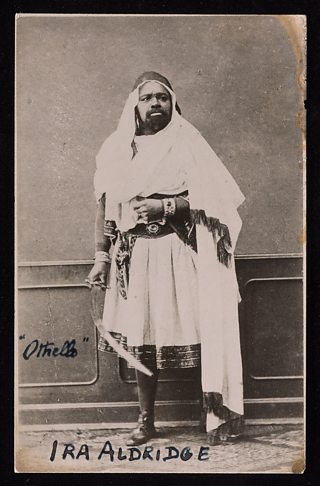
Ira Frederick Aldridge became the first black actor to play Othello. His performances in the provinces or the English regions were very successful and he spent a lot of his time touring the country rather than performing in the capital.
The apology at the top of the theatre bill is interesting – word of the ‘African Roscius’ fame (as he was widely known) has spread in advance of his appearance, and the theatre manager has to apologise for getting his dates mixed up. (He also called himself African Roscius, after the famous Roman actor of the first century BC.)
His first major performance of Othello was at London’s Royalty Theatre in 1826.
This playbill dated 1827, is working hard to attract spectators to enjoy the novelty of seeing a black actor perform. According to the playbill, he’s just gone down a storm in the theatres of Bath, Bristol, Brighton, Birmingham, Manchester, Sheffield, Newcastle, Liverpool, Norwich as well as Edinburgh and Glasgow.
Aldridge had come a long way from when he’d emigrated to England from New York in 1824. After his performance as Othello in Scarborough he was described as an “actor of genius”.
But although he conquered the English provinces, the capital was not as easy. The traditional story is that Aldridge was not accepted by London audiences because of racism – and some papers, including one national newspaper of the day, wrote racist reviews of his performances.
“Owing to the shape of his lips it is utterly impossible for him to pronounce English,” said the reviewer in 1825.
Current research suggests that the story is less clear cut. A flu outbreak was responsible for a low turn-out by audiences in the capital and those who supported slavery attempted to bribe some reviewers.
However, not all of these critics were negative. The Globe found his voice "distinct and sonorous".
Either way Aldridge spent most of his professional career touring the cities and towns of England, as well as on the continent where he was extremely successful.
In Russia he was paid £60 for every performance, one of the highest paid actors in the world.
At a performance in 1863, French poet and novelist Théophile Gautier described his performance as “Othello himself, as Shakespeare has created him…quiet, reserved, classic and majestic”.
When Aldridge died in Poland, at the age of 59 in 1867, he was given a state funeral.
Undoubtedly, Aldridge challenged the assumptions of the ear and educated audiences to see black people in a new light, as equals in intelligence, artistic endeavour, and sensitivity.
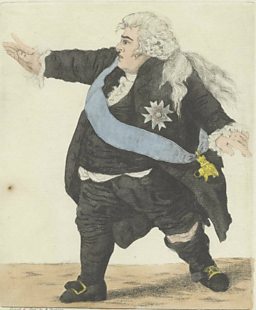
About Shakespeare on Tour
From the moment they were written through to the present day, Shakespeare’s plays have continued to enthral and inspire audiences. They’ve been performed in venues big and small – including inns, private houses and emerging provincial theatres.

BBC English Regions is building a digital picture which tracks some of the many iconic moments across the country as we follow the ‘explosion’ in the performance of The Bard’s plays, from his own lifetime to recent times.
Drawing on fascinating new research from Records of Early English Drama (REED), plus the British Library's extensive collection of playbills, as well as expertise from De Montfort University and the Arts and Humanities Research Council, Shakespeare on Tour is a unique timeline of iconic moments of those performances, starting with his own troupe of actors, to highlights from more recent times. Listen out for stories on Shakespeare’s legacy on your BBC Local Radio station from Monday 21 March, 2016.
You never know - you might find evidence of Shakespeare’s footsteps close to home…
Craig Henderson, BBC English Regions
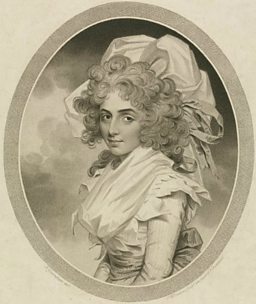
-
![]()
Shakespeare Lives
The nation’s greatest performing arts institutions mark 400 years since the Bard's death

Related Links
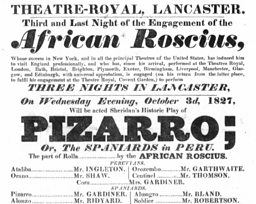
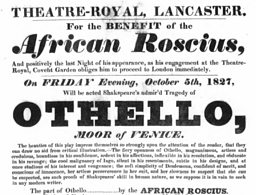
Shakespeare on Tour: Around Lancaster
-
![]()
Shakespeare is dead, but his players tour Lancashire
Dunkenhalgh Hall was a frequent stop on the King's Men tour through Lancashire
-
![]()
Lancashire family prove pivotal to Shakespeare's players
The Stanley’s were enthusiastic sponsors of Elizabethan entertainers
Shakespeare on Tour: Around the country
-
![]()
Ipswich: a magnet for Shakespeare?
Why did Shakespeare's company visit Ipswich ten times?
-
![]()
Sarah Siddons visits Norwich
Putting the Theatre Royal, Norwich, on the map
-
![]()
Madame Tussaud's exhibiton in Nottingham
Including a model of William Shakespeare
-
![]()
Touring Kent to avoid the plague
In 1592, the plague forced touring theatre companies out of London









